2 years ago
There’s a lot going on underground. Worms, mud, sewers and miles and miles of deep level shelters waiting to be discovered by you.
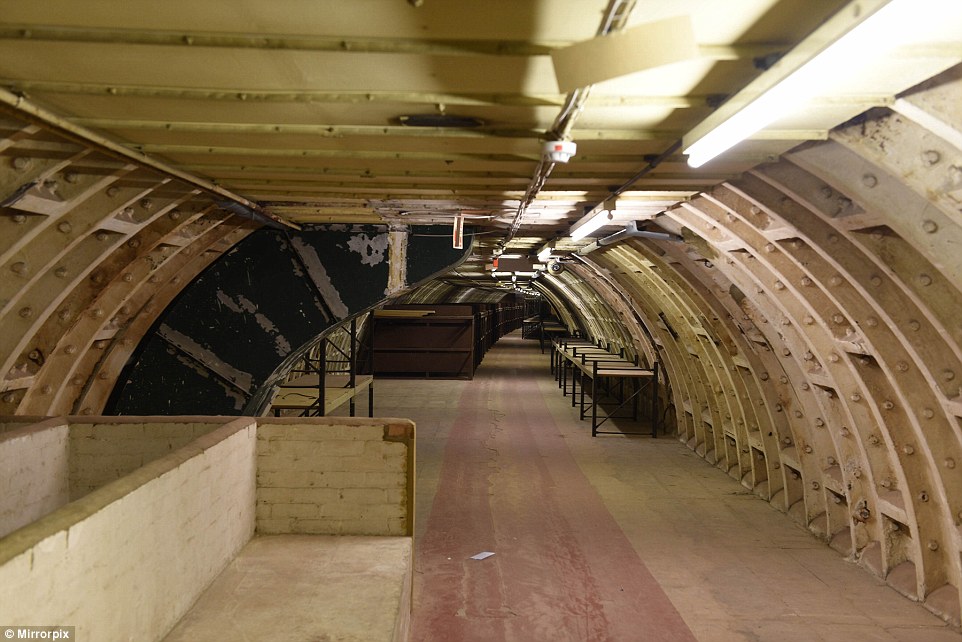
Did you know there are miles of disused underground tunnels beneath the Northern line in Clapham? We didn’t either, until we journeyed a whopping 11 stories underground to explore the WWII bomb shelters that were created to offer safety from the Blitz.
During the height of the air bombing of London in the 1940s, the government commissioned 10 deep-level shelters. 2 of these (Oval and St Paul’s) had to be abandoned during the construction process when it was made clear that the shelters wouldn’t come to fruition due to flooding at Oval and concerns over the foundations of the cathedral at St Paul’s. The other 8 however, all went ahead and at Belsize Park, Camden Town, Chancery Lane, Goodge Street, Stockwell, Clapham North, Clapham Common and Clapham South, deep-level bunkers were opened that were each able to safety accommodate 8,000 members of the London pubic who were fleeing from overhead bombs. Opening in July 1944, the shelters were never used to full capacity- at that point in the War the main blitzing was over. However, they did provide safety to thousands on several occasions and would have been an incredible comfort to many living nearby without appropriate shelter.
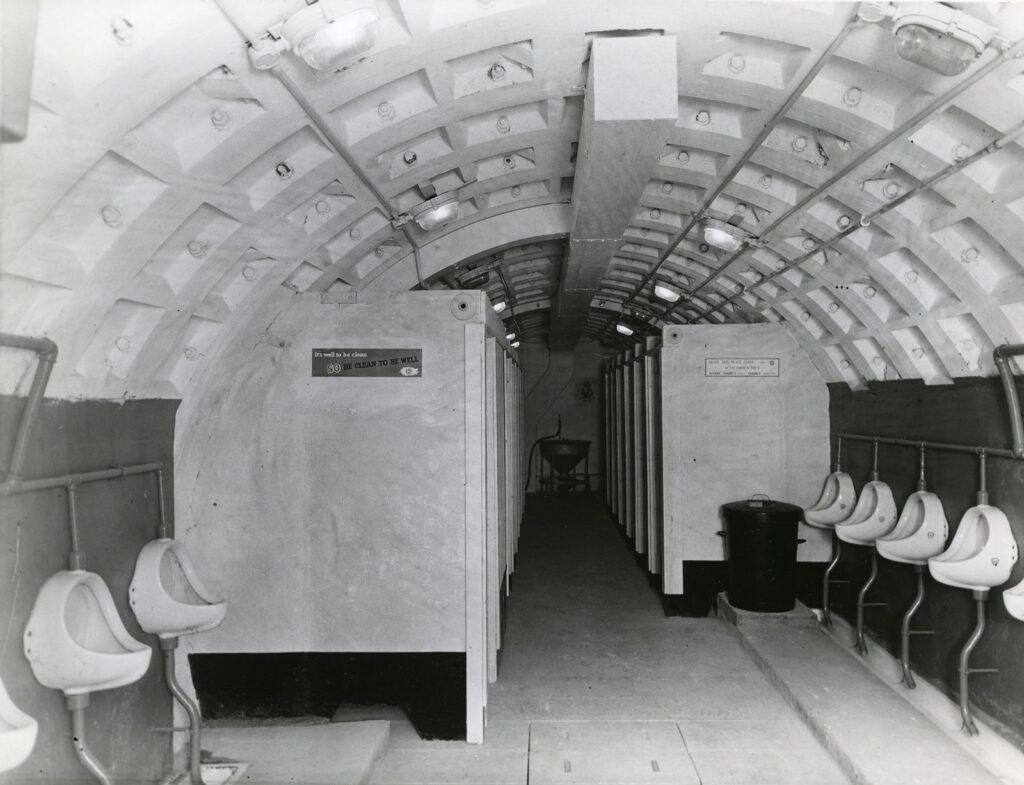
The tour, put on by The London Transport Museum, started at Clapham South tube station. Our guides then took us into the deep tunnel via one of the two entrances; one right on the edge of the Common and the other next to M&S. The latter is the one we used and we took a spiralled staircase down 180 steps. A few minutes later we were (a little dizzy and) in the entrance hall of the shelter. The space was where members of the public would gather having heard the air-raid sirens. There they’d be handed a ticket which dictated the shelter they’d been assigned. Each of the 8 deep shelters across London had different ‘personalities’, and the individual shelter halls within them were named to a theme. Clapham South was named after navy admirals and thus the compartments were named ‘Nelson’, ‘Mandela’ and ‘Evans’. The idea was to make the shelters feel as homely and relatable as possible to those who needed to use them- especially in such a scary moment in history.
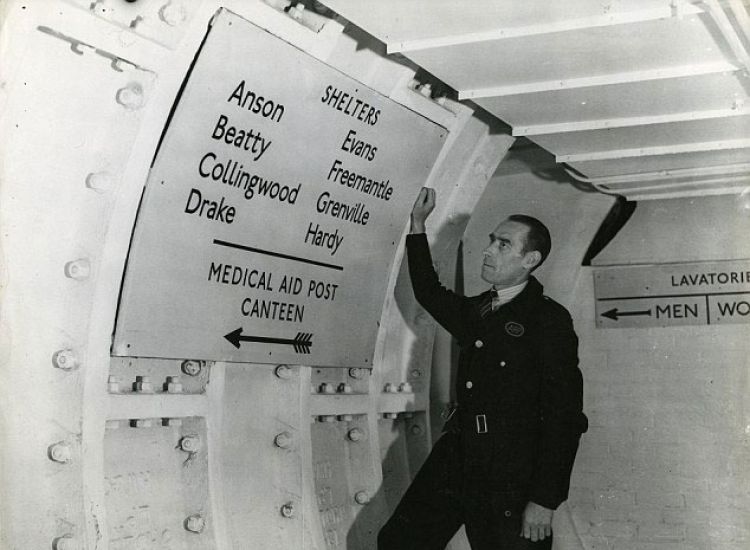
Once in the shelters, there was an effort to keep moral high. The government nicknamed them ‘underground palaces’ to encourage the use of them and residents were supplied with one of a three-tiered bunk bed, access to a doctor and there was even a canteen. The canteen (though a little pricier than items would have been above ground) also provided things ‘off ration’, meaning that people were able to purchase cakes, sandwiches and hot chocolate; a real treat in rationed London. Before lights out there were reported dances and games too, to keep the community spirit running whilst bombs whistled overhead.
When the War was over, the tunnels were put to use in different ways. In 1948 the 200 who’d arrived on Empire Windrush from the Caribbean without any onward contacts used the shelters as temporary accommodation before they found permanent residences. Many found places to stay after a few days, but the deep shelters were used for up to 4 weeks by some.
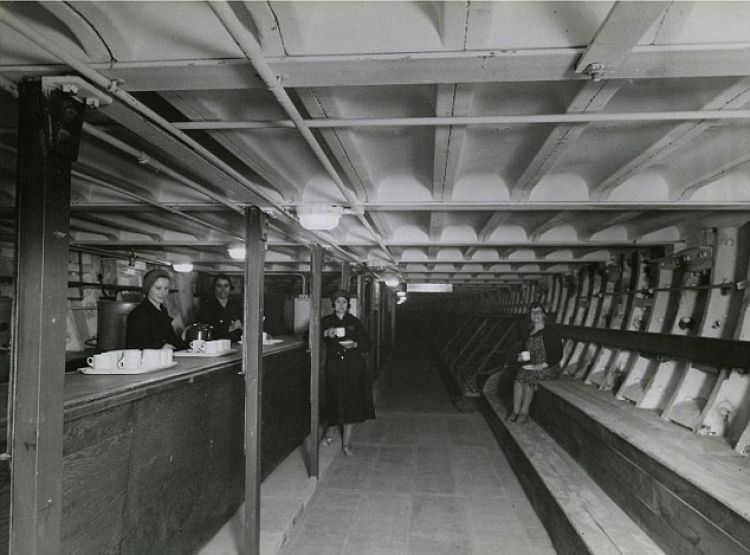
The Festival of Britain took place in 1951 in an effort to improve the moral of post-War England, and the shelters were then turned into hotels for those wanting to visit the festival grounds. There was a shuttle bus that ferried people from the ‘hotel’ to the South Bank, making the option of accommodation in the shelters appealing.
The tunnels are now unable to be used in any residential capacity- the London Fire Brigade deemed them unsafe for the public after a member of the US military set fire to the Goodge Street branch of shelters in 1956. A troop were staying in a part the deep shelters that had been converted into a hostel for American soldiers, when one of their members tried to burn an engraving onto the wall. An ember landed on some bedding and set the whole place ablaze for several days.
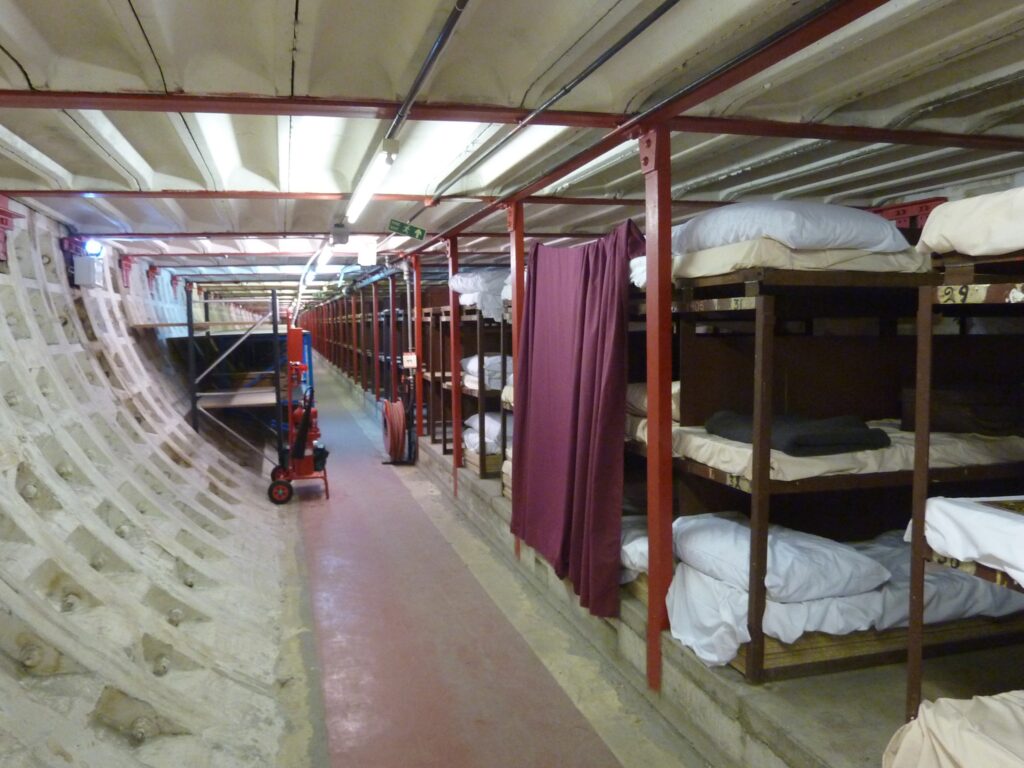
At the time of the fire starting there were 31 members of staff and 90 soldiers in transit in the ‘London Assembly Centre’, as it was then named. Thankfully everyone managed to escape with no casualties, but the incident caused a review where it was decided that all the deep-level shelters couldn’t be made safe enough to be used frequently as places to stay. Since then, all 8 of them were closed to the public for residential purposes.

Some shelters are still being visited, however. In Clapham Common, the shelter has been converted into a huge underground farm. ‘Growing Underground‘ produce hyper-local, sustainable salads and herbs under your feet in the middle of London. An incredible product to come from a disused bomb shelter. The London Transport Museum often put on tours similar to the one we took part in, and we recommend keeping an eye on their website to see when their next batch of tours pop up. The hour flew by. It was extremely interesting and our guides were generous with their knowledge on the tunnels. There’s a lot of history buried under your feet, Clapham, you just need to discover it!